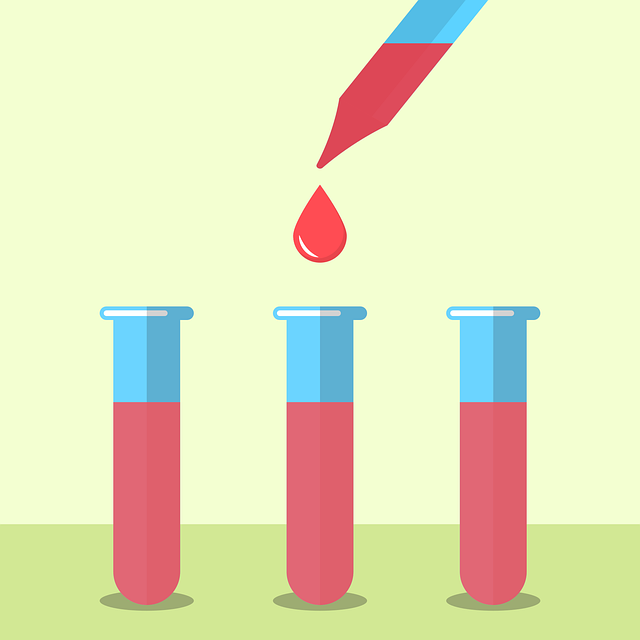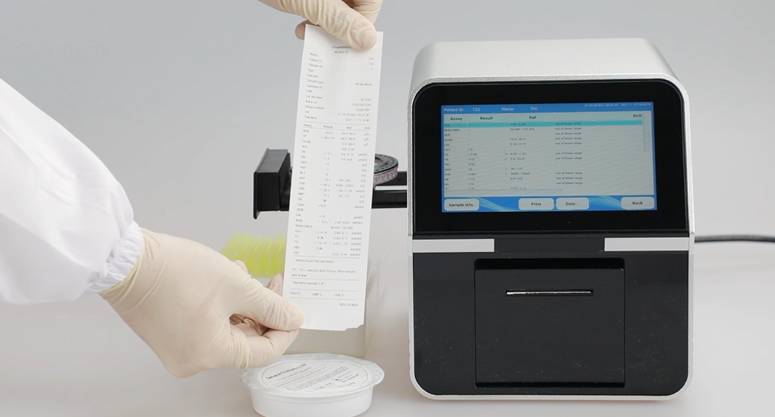POCT (point-of-care testing) is an important tool for reducing mortality, morbidity and improving the quality of life of patients. Recent developments in emerging technologies have made new POCT instruments possible. This article will introduce the recent trends in POCT technology.
Point of care diagnostics technology trends
1. nucleic acid molecular POCT detection technology
Traditional nucleic acid-based molecular detection includes three main steps: nucleic acid extraction and purification, nucleic acid amplification and nucleic acid detection. Nucleic acid extraction is the first step in sample preparation and is one of the main challenges in transforming laboratory molecular tests into point of care diagnostics.
Polymerase chain reaction (PCR) has the advantage of high sensitivity and specificity and is still considered the gold standard for nucleic acid detection. In recent years, technologies such as reverse transcription polymerase chain reaction, thermostatic amplification, and CRISPR/Cas have also been applied in nucleic acid molecular point of care devices. Commercial products include both benchtop POCT devices and handheld devices.
Many commercial nucleic acid molecular point of care devices are currently approved for marketing.
Benchtop nucleic acid molecular
POCT devices generally require power supply and are suitable for placement in hospital departments or central laboratories for use by clinicians. Handheld nucleic acid molecular POCT devices generally apply battery-powered systems and are suitable for primary care sites and homes where resources are scarce.
2. Paper-based microfluidics with conventional lateral flow and SHERLOCK technology
Paper-based microfluidic analysis device (μPAD) is a paper-based microfluidic analysis device. This technology has the advantages of low cost, simple manufacturing process, limited resources, non-toxic and environmentally friendly. Therefore, it has been rapidly developed in the past decade.
Due to many of these factors, scientists are applying paper-based microfluidic devices in various fields. And in the field of clinical diagnostics, scientists use them to detect various diseases as well as physiological indicators of patients.
Transverse flow technology occupies an important place in point of care diagnostics. A notable recent development is the highly sensitive SHERLOCK technology for the detection of target DNA or RNA. It is a technique that utilizes clustered regularly interspaced short palindromic repeat sequences (CRISPR). The principle is to reverse transcribe the viral RNA target into cDNA and then amplify it by isothermal amplification techniques. The amplification product transcribes the T7 RNA polymerase back to RNA, thus achieving the purpose of amplifying RNA.
3. Combination of mobile smart devices and smart APP with POCT diagnostic technology
The widespread use of mobile smart devices such as smart phones and tablets provides important conditions for POCT integration where the computing power of mobile smart devices can be used for process control and data analysis. Storage and communication capabilities can be used to store and transmit data collected from the device. And the built-in flash and camera can also be used for optical sensing.
In addition, the integration of mobile smart devices with POCT can be based on telemedicine data available on cloud-based servers. Although a standardized pathway for integration into routine medical records is still lacking, making this data available outside the confines of a specific hospital or device would pave the way for future progress.
4. Integration of artificial intelligence with point of care diagnostics technology
The integration of artificial intelligence (AI) with point of care diagnostics technology can provide test recommendations and result interpretation to examinees, guide the clinic based on clinical symptoms, physical examination, and medical history in order to clarify the diagnosis and establish treatment decisions.
While bringing convenience to healthcare professionals and reducing testing and diagnostic errors, it also breaks the deadlock of uneven distribution of healthcare resources. This allows patients in remote areas to have access to the most advanced and professional medical testing services.
Poc testing has become an important auxiliary assessment tool for clinical applications in critical care, primary care, patient out-of-hospital management, and consumer self-testing.
5. wearable point of care diagnostics technology
Wearable poct devices are mainly classified into non-invasive, invasive and hybrid types.
Non-invasive wearable poct devices include smart watches, exercise tracers, etc. It is mainly used in exercise to monitor heart rate. It is mainly used in sports to monitor indices such as heart rate, body temperature, blood pressure, etc., to deal with sports health care, and also to enable remote patient monitoring and home healthcare services.
Invasive as well as hybrid wearable POCT devices are mainly used in the medical field, which are realized by biosensors, electronics and microchips to monitor, intervene and intervene in the organism in real time, such as blood glucose monitoring chips, healing chips, implantable contraceptive devices and implantable 3D smart organs. With the development of technology, wearable devices will be applied to more fields and scenarios.
Wearable, non-invasive continuous testing devices are constantly being developed and are significant for chronic diseases and health monitoring.
Wearable biosensors have received significant attention worldwide for their great potential in predictive medicine modeling and allowing personalized POCT. Non-invasive point of care diagnostics based on biosensors have also been developed and refined in recent years.
6. integration of mass spectrometry/nuclear magnetic resonance with point of care diagnostics technology
With technological advances, mass spectrometry has become a powerful tool for clinical analysis. There is a strong push to shift the analytical techniques to POCT analysis. New developments in ionization and micro-mass spectrometry have made it possible to implement POC-MS analysis.
7. droplet/digital microfluidics and point of care diagnostics
Droplet or digital PCR has been used in central laboratory settings for high-sensitivity nucleic acid or protein analysis. In these methods, the liquid sample is divided into very small and discrete positions (e.g. droplets) in various ways. This increases the effective concentration of analytes and enables high-sensitivity detection and absolute quantification.
8. 3D printing technology and POCT diagnostic technology product manufacturing
3D printing technology has become a powerful tool for manufacturing various analytical instruments. It plays an important value in prototyping and iterative refinement of complex IVD devices as a rapid and low-cost manufacturing technology and does not require a clean room.
This is because of features such as complex 3D model construction, simplified prototyping process and low cost. In particular, it helps to break the limitations in materials, cost and manufacturing technology in the development of portable POCT devices.
Commonly used 3D printing technologies in the IVD field include stereolithography, digital light projection, fused deposition modeling, and inkjet printing. Examples of 3D printable POCT device components include sample pretreatment devices, microfluidic reagents, blood mixers, fluid drive units, detector adapters, housing units, or entire microfluidic devices.

Point of care diagnostics technology development prospects and R&D priorities
1. From POCT diagnostics to POCT solutions
As POCT is gradually applied in emergency, ICU, outpatient and other in-hospital departments, it is gradually expanded in out-of-hospital patient management, health testing, public health prevention and control and other out-of-hospital scenarios. The demand for point of care diagnostics has evolved from simple index testing to rapid and convenient testing solutions for a certain scenario.
The "miniaturization", "integration" and "information intelligence" have also become higher requirements for the development of POCT technology and technology integration.
2. Consider the balance of technology, performance and cost of point of care diagnostics
Concerns about the accuracy and cost of POCT diagnosis is a factor affecting its application. For POCT diagnostics, on the one hand, there is a need for further technical innovation, relying on innovative technical means to establish and optimize technical platforms with higher accuracy and lower cost to meet the testing needs in different situations.
On the other hand, it is necessary to fully evaluate the scenarios and cost and performance requirements of point of care diagnostics.
In summary, with the improvement of POCT technology, it is expected that more testing applications and higher detection performance indicators can be achieved in the POCT platform. POCT also extends from in vitro detection technology to include mobile ultrasound, electrocardiography and other multi-dimensional detection technology.



